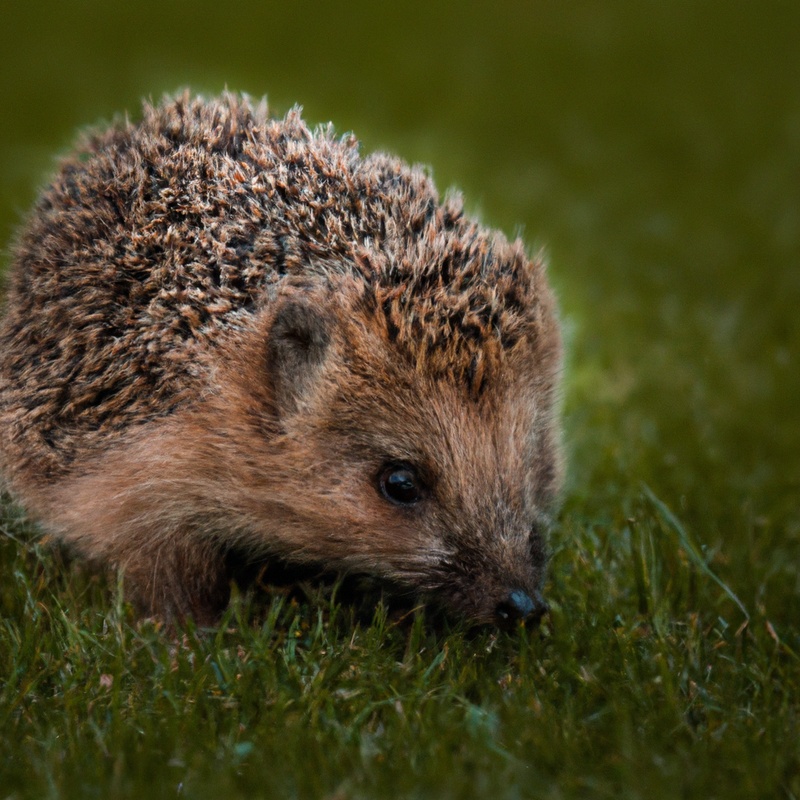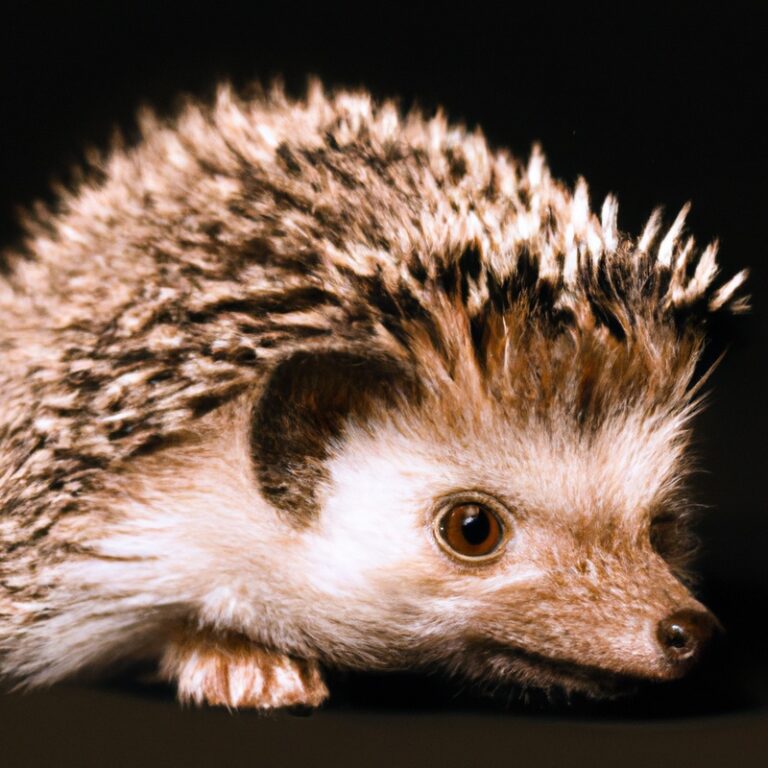How To Create a Hedgehog-Friendly Feeding Station?
Key Takeaways:
- Provide a variety of foods to attract hedgehogs to your feeding station.
- Keep the feeding area clean and free of hazards to protect hedgehogs while they eat.
- Place the feeding station in a quiet and undisturbed location to ensure hedgehogs feel safe.
- Supplement the feeding station with fresh water to keep hedgehogs hydrated.
Do you want to help our prickly friends thrive in your garden? Creating a hedgehog-friendly feeding station is the perfect way to provide them with a safe and nourishing habitat.
In this article, we will dive into the importance of these feeding stations and the benefits they bring to hedgehogs.
You will discover how to choose the right location, what essential features to include, and ways to attract these adorable creatures to your garden. Whether you’re a hedgehog enthusiast or simply want to support local wildlife, this guide will show you how to create a haven for our spiky friends.
So, let’s get started!
| Materials | Instructions |
|---|---|
| 1. Hedgehog house | Choose or build a hedgehog house that is insulated and waterproof. |
| 2. Feeding dish | Use a shallow feeding dish to prevent food from spilling out. |
| 3. Hedgehog food | Provide hedgehog-specific food such as wet cat or dog food, mealworms, or specialized hedgehog food. |
| 4. Fresh water | Keep a freshwater source near the feeding area, like a shallow dish or a birdbath. |
| 5. Safety precautions | Place the feeding station in a quiet and secluded area, away from predators and high foot-traffic. |
Understanding the Importance of Hedgehog-Friendly Feeding Stations
Creating hedgehog-friendly feeding stations is essential for the well-being and survival of these adorable creatures.
Why do Hedgehogs Need Feeding Stations?
Hedgehogs need feeding stations because they provide a reliable and safe food source for these cute creatures. Feeding stations help hedgehogs obtain the vital nutrition they need to stay healthy and thrive.
These stations also protect their food from larger predators and prevent it from getting spoiled or contaminated.
By having dedicated feeding stations, you’re ensuring that hedgehogs get the necessary sustenance without any risks or disruptions, promoting their well-being in your area.

The Benefits of Creating a Hedgehog-Friendly Environment
Creating a hedgehog-friendly environment has several benefits:
- Hedgehogs play a crucial role in maintaining the ecological balance of our gardens by eating pests like slugs and insects.
- By providing shelter, such as log piles or hedgehog houses, you can protect hedgehogs from predators and harsh weather conditions.
- Creating access points in fences and garden boundaries allows hedgehogs to roam freely and find food and mates.
- Avoiding the use of pesticides and chemicals in your garden helps ensure a healthy and safe environment for hedgehogs.

Choosing the Right Location for your Hedgehog Feeding Station
To choose the right location for your hedgehog feeding station, consider accessibility, safety, and proximity to shelter and water sources.
What to Consider when Selecting a Feeding Station Location?
When selecting a location for your hedgehog feeding station, there are several important factors to consider:
- Accessibility: Choose a spot that is easily accessible for both you and the hedgehogs. This will make it convenient for you to refill the food and water regularly, and for the hedgehogs to reach the station without obstacles.
- Safety: Ensure that the location is safe for the hedgehogs. Avoid areas with heavy foot traffic, potential hazards like busy roads, and places where predatory animals may pose a threat.
- Shelter: Look for a spot with natural cover or provide artificial shelter nearby. Hedgehogs prefer secluded areas, so having hiding places nearby will make them feel more secure while they eat.
- Water source: It’s beneficial to have a water source nearby. Hedgehogs need access to water for hydration and to clean themselves.
By considering these factors, you can create a feeding station that is convenient, safe, and welcoming for hedgehogs to visit and enjoy.
How to Provide Safety and Access for Hedgehogs?
To provide safety and access for hedgehogs, consider the following tips:
- Create hedgehog-friendly access points: Install ramps or make small holes in garden fences to allow hedgehogs to enter and exit your yard safely.
- Keep gardens free from hazards: Remove any sharp objects, holes, or barriers that could harm hedgehogs. Ensure that ponds have sloping edges to prevent drowning.
- Use natural materials: Avoid using pesticides or chemical fertilizers in your garden to protect hedgehogs from poisoning. Opt for organic and wildlife-friendly gardening methods.
- Provide shelter: Offer hedgehogs a safe place to hide by creating small piles of leaves, logs, or a hedgehog house. This gives them a safe and cozy spot to rest or hibernate.
- Ensure water availability: Place a shallow dish of fresh water in your garden to provide hedgehogs with a source of hydration, especially during dry periods.
By taking these steps, you can contribute to the safety and well-being of hedgehogs in your area.
Essential Features of a Hedgehog-Friendly Feeding Station
A hedgehog-friendly feeding station should have certain essential features to ensure the safety and well-being of the hedgehogs.
What Should You Include in a Hedgehog Feeding Station?
A hedgehog feeding station should include a shallow dish for food and a separate dish for water.
The food dish should be placed in a quiet and safe spot, away from potential predators.
It’s important to choose a high-quality hedgehog food or a mixture of wet and dry cat food.
Avoid feeding them bread, milk, or any food with a high sugar content.
Provide fresh water in a stable dish and make sure to clean and refill both dishes regularly.
How to Make Sure the Feeding Station is Hedgehog-Safe?
To make sure your feeding station is hedgehog-safe, there are a few key things to keep in mind.
Firstly, choose a sturdy and enclosed design that keeps out larger animals.
Secondly, place it in a quiet and secluded area away from predators.
Thirdly, make sure there is enough space for the hedgehog to enter and exit comfortably.
Additionally, avoid using sharp or dangerous materials, and regularly clean and disinfect the feeding station to maintain hygiene.
Taking these precautions will help ensure the safety and well-being of the hedgehogs.
Selecting the Right Hedgehog Food
When choosing hedgehog food, consider their dietary needs and opt for high-quality, specifically formulated options.
What Types of Food are Suitable for Hedgehogs?
Hedgehogs have specific dietary needs that should be met for their health and well-being. Suitable foods for hedgehogs include:
- Insects: Hedgehogs are insectivores, so a diet rich in insects is essential. They enjoy mealworms, crickets, and beetles as a primary source of protein.
- Cat or dog food: High-quality, unflavored, and grain-free cat or dog food can be offered as a supplement to insects. Look for products with a high meat content and no artificial additives.
- Fruits and vegetables: Hedgehogs can also eat small amounts of fruits and vegetables, such as apples, carrots, and peas. These should be given in moderation as treats.
- Fresh water: It is important to provide fresh water at all times. Use a shallow bowl or a water bottle designed for small animals.
Remember to avoid feeding hedgehogs dairy products, sugary treats, or anything seasoned or spiced. Each hedgehog may have individual preferences, so it’s crucial to monitor their eating habits and adjust their diet accordingly.
How to Avoid Harmful Foods for Hedgehogs?
To avoid harmful foods for hedgehogs, avoid feeding them dairy products, sugary foods, and foods high in salt. Hedgehogs are lactose intolerant, so dairy can cause digestive issues.
Sugar can lead to obesity and dental problems, while excessive salt can harm their kidneys.
Also, avoid feeding them dried fruits, nuts, and processed meats as they can be difficult for hedgehogs to digest. Stick to a diet of specially formulated hedgehog food, along with fresh fruits, vegetables, and insects.
Creating a DIY Hedgehog Feeding Station
To create a hedgehog-friendly feeding station, you’ll need to follow a simple DIY approach.
Step-by-step Guide to Building a Hedgehog Feeding Station
To build a hedgehog feeding station, start by finding a sturdy wooden box with a lid. Cut a small entrance hole in one of the sides, ensuring it’s large enough for a hedgehog to fit through but not too big to allow other animals in.
Line the bottom of the box with a waterproof material, such as a plastic sheet or pond liner.
Fill the station with fresh water and place a shallow dish of wet cat or dog food inside. Finally, put the lid on securely and position the feeding station in a quiet, sheltered spot in your garden.
What Materials and Tools Will You Need?
To create a hedgehog-friendly feeding station, you will need the following materials and tools:
- A sturdy box or wooden crate: This will serve as the main structure for the feeding station. Make sure it is big enough for a hedgehog to enter and exit comfortably.
- A plastic tray or bowl: This will hold the food and water for the hedgehog. Choose a shallow dish that is easy for them to access.
- A weight or heavy object: To secure the feeding station and prevent it from being knocked over by strong winds or other animals, use a weight or heavy object to keep it in place.
- A drill or hammer and nails: You will need these tools to create ventilation holes in the feeding station and to assemble the wooden crate if necessary.
- Optional: A roof or cover: If you live in an area with rain or strong sunlight, consider adding a roof or cover to protect the food and water from the elements.
By gathering these materials and tools, you will be well-equipped to create a comfortable and safe feeding station for hedgehogs in your garden.
Maintaining and Cleaning the Feeding Station
To ensure a healthy and inviting feeding station, regular maintenance and cleaning are essential.
How to Keep the Feeding Station Clean and Hygienic?
To keep the feeding station clean and hygienic, there are a few simple steps you can take. First, remove any uneaten food and clean the dishes daily.
This will help prevent mold or bacteria growth.
Second, regularly check and clean the surrounding area for any spills or waste. Third, avoid using harmful chemicals or pesticides near the station, as they can be harmful to hedgehogs.
Lastly, consider using feeding mats or trays to make cleaning easier.
How Often Should You Refill the Food and Water?
To ensure that hedgehogs have a constant supply of food and water, it is important to check and refill their feeding station every day. Hedgehogs have high metabolisms, so they need to eat regularly.
Make sure the food and water are fresh and clean to keep the hedgehogs healthy.
Refilling the food and water daily also prevents them from going hungry or dehydrated. Additionally, cleaning the feeding station regularly will help maintain a hygienic environment for the hedgehogs.
Encouraging Hedgehogs to Visit and Use the Feeding Station
To encourage hedgehogs to visit and use the feeding station, provide a suitable habitat and offer enticing food options.
How to Attract Hedgehogs to your Garden?
To attract hedgehogs to your garden, create a safe and welcoming environment. Provide hedgehog-friendly habitats like log piles and dense shrubs.
Keep your garden free from chemicals, such as pesticides.
Ensure there is easy access for hedgehogs by creating small holes or gaps in fences. Provide a fresh water source and set up feeding stations with a suitable hedgehog diet, like wet cat food or specialized hedgehog food.
Avoid using slug pellets, as they can harm hedgehogs.
What Measures Can You Take to Ensure Regular Visits?
To ensure regular visits from hedgehogs, there are a few measures you can take. Firstly, provide a reliable and constant source of food, such as cat or dog food, and fresh water.
Secondly, create a secure and welcoming environment by adding hiding places like piles of leaves or logs.
Additionally, refrain from using chemicals or pesticides in your garden, as it can be harmful to hedgehogs. Finally, consider installing a hedgehog house or nesting box to provide them with a safe shelter.
Frequently Asked Questions (FAQs)
What Are Some Common Foods Hedgehogs Can Eat?
Hedgehogs are omnivorous creatures that have a diverse diet.
Some common foods they can eat include:
- Insects and invertebrates: Hedgehogs love snacking on insects like beetles, caterpillars, worms, and slugs. These provide essential protein for their diet.
- Fruits: Hedgehogs can enjoy a range of fruits, such as apples, pears, berries, and melons. Just make sure to remove any seeds or pits that could be harmful.
- Vegetables: They also appreciate vegetables like peas, carrots, sweet potatoes, and leafy greens. Cooked or raw, these veggies provide important nutrients.
- Meat and poultry: While not a staple, small portions of lean cooked meat or poultry can be given as an occasional treat.
Remember to always provide fresh water for hedgehogs, and avoid feeding them dairy products, processed foods, or anything high in salt or sugar.
Can I Use Leftovers or Bread to Feed Hedgehogs?
Using leftovers or bread to feed hedgehogs is not recommended.
Leftovers may contain spices, seasonings, or ingredients that are harmful to hedgehogs.
Bread does not provide the necessary nutrients and can lead to nutritional deficiencies.
It’s best to feed hedgehogs a balanced diet of specially formulated hedgehog food, wet cat food, or meat-based cat biscuits.
Additionally, fresh water should always be available for them to drink.
Are There Any Foods to Avoid Feeding Hedgehogs?
Certain foods should be avoided when feeding hedgehogs. Avoid giving them milk, as hedgehogs are lactose intolerant.
They also cannot digest bread easily, so it’s best to steer clear.
High-sugar foods like chocolate and sugary treats are not suitable for hedgehog consumption. Finally, avoid giving them raw meat, as it may contain harmful bacteria.
Stick to a diet of cat or dog food, along with fruits, vegetables, and insects for a healthy hedgehog.
How Can I Tell If Hedgehogs Are Using the Feeding Station?
To determine if hedgehogs are using the feeding station, you can look for certain signs.
Firstly, check for footprints or tracks near the feeding area.
Hedgehog pawprints are distinctive and can be easily recognized.
Secondly, keep an eye out for droppings which are a clear indication that hedgehogs are visiting the station.
Hedgehog droppings are usually dark in color and contain undigested food.
Lastly, you can also set up a trail camera near the feeding station to capture images or videos of the hedgehogs in action.
Final Verdict
Creating a hedgehog-friendly feeding station is a simple and effective way to support the well-being of these adorable creatures. By understanding the importance of feeding stations, selecting the right location, providing essential features, and choosing suitable food, we can ensure a safe and accessible environment for hedgehogs.
By following a step-by-step guide, maintaining cleanliness, and implementing measures to attract hedgehogs, we can encourage their regular visits.
Remember to avoid harmful foods and regularly refill the station to maintain a healthy feeding routine. With these tips, you can make a positive impact on hedgehog populations and create a haven for these fascinating creatures in your garden.







